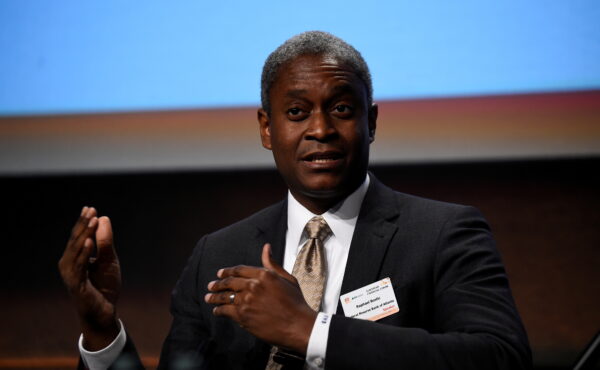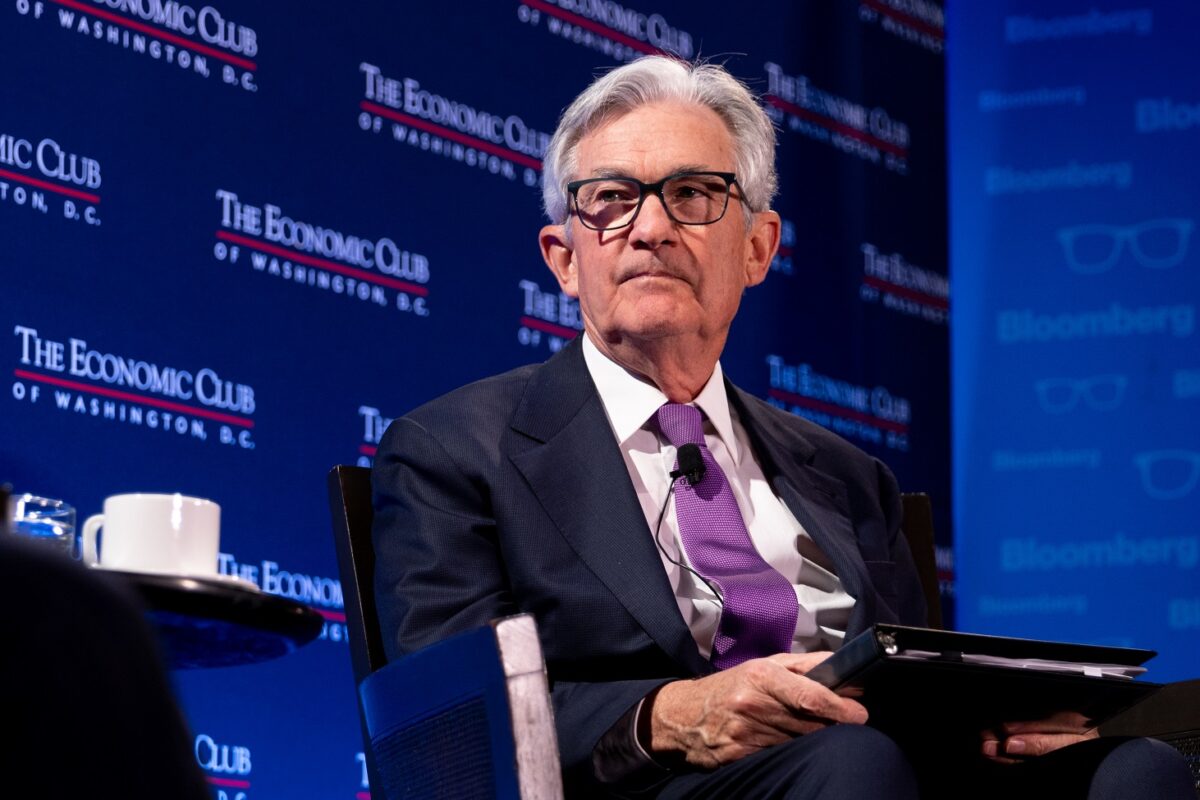Federal Reserve economists still expect a recession starting later this year, according to minutes from the June Federal Open Market Committee (FOMC) policy meetings.
The economic forecast put together by staff at the policy meeting “continued to assume that the effects of the expected further tightening in bank credit conditions, amid already tight financial conditions” would trigger a “mild recession” later this year.” The tepid downturn would then be “followed by a moderately paced recovery.”
Minutes stated that the real GDP was predicted to decelerate in the second and third quarters “before declining modestly” in the fourth quarter and the first quarter of 2024.
“Real GDP growth over 2024 and 2025 was projected to be below the staff’s estimate of potential output growth. The unemployment rate was forecast to increase this year, peak next year, and remain near that level through 2025,” the minutes said.
Rate-setting Committee members agreed that more rate hikes are ahead but at a slower pace. They also found it acceptable or appropriate to leave the target rate unchanged at 5.00 and 5.25 percent, adding that maintaining a restrictive stance would be ideal. But some participants could have supported a 25-basis-point rate hike.
“In discussing the policy outlook, all participants continued to anticipate that, with inflation still well above the Committee’s 2 percent goal and the labor market remaining very tight, maintaining a restrictive stance for monetary policy would be appropriate to achieve the Committee’s objectives,” the FOMC minutes said. “Almost all participants noted that in their economic projections that they judged that additional increases in the target federal funds rate during 2023 would be appropriate.”
Meeting participants noted that economic and inflation outlook uncertainty was “elevated” and that more information would be necessary to decide an appropriate monetary policy stance. But there are still upside risks to inflation, the minutes noted.
“Almost all participants stated that, with inflation still well above the Committee’s longer-run goal and the labor market remaining tight, upside risks to the inflation outlook or the possibility that persistently high inflation might cause inflation expectations to become unanchored remained key factors shaping the policy outlook,” the minutes stated.
Although there have been receding stresses in the banking system, meeting participants purported that it would be critical to watch for further developments in the financial sector and determine if more tightening of credit conditions will weigh on the U.S. economy.
“Some participants noted concerns about the potential risks stemming from weakness in commercial real estate,” the minutes said.
Financial markets barely reacted to the news, as the leading benchmark indexes recording modest losses on July 5.
The U.S. Treasury market was mixed, with the benchmark 10-year yield up more than 8 basis points to above 3.94 percent. The 1-month bill was flat, trading below 5.2 percent.
The U.S. Dollar Index (DXY), which measures the greenback against a basket of currencies, firmed above 103.00.
Where Fed Officials Stand
Despite the Survey of Economic Projections (SEP) data (pdf) showing that officials anticipate two more rate hikes this year to lift the median policy rate to 5.61 percent, not everyone thinks the institution needs to keep raising interest rates.
Atlanta Fed Bank President Raphael Bostic told the Irish Association of Investment Managers annual dinner in Dublin, Ireland, in June that there is no need to boost the fed funds rate again this cycle unless the economic landscape experiences unexpected changes.
Mr. Bostic noted that he sees the cumulative effects of the central bank’s rate hikes since March 2022 “showing up” in the U.S. economy, adding that the Fed was enjoying progress on the inflation front.
“Now, let me be clear what I mean by ‘pause.’ My view is that we have reached a level of the nominal federal funds rate that should be sufficient to move inflation toward the 2% target over an acceptable timeframe,” he said. “I realize this suggests a definition of ‘pause’ that brings with it an expectation of no further hikes unless things fail to go according to plan. That’s my baseline case.”

Chicago Fed Bank President Austan Goolsbee said in an interview with Fox Business on June 30 that more data would be needed to determine if the Fed should pull the trigger on a rate hike or hit the pause button for the second consecutive meeting.
“The thing that everybody should put their eye on in the immediate term is, are goods prices, inflation, is it too high for one-off reasons—like used cars were especially high but that’s going to go away—or is there something more persistent?” Mr. Goolsbee told the business news network on June 30.
He noted that he had yet to make a decision on the next policy decision at the July 25–26 FOMC meeting.
But Fed Chair Jerome Powell signaled that more restriction of monetary policy is ahead, adding that he would not take rate hikes at “consecutive meetings off the table.”
“We’ve now moved up to where we actually are in restrictive territory, but we haven’t been there very long,” Mr. Powell said at a European Central Bank forum in Portugal on June 28. “We believe there’s more restriction coming.”
Incoming Data
A lot of economic data will be released heading into the Fed gathering later this month.
The June non-farm payrolls report will be published on June 7, with the consensus estimate showing 225,000 new jobs. The unemployment rate and annual average hourly wage growth are forecast to dip to 3.6 percent and 4.2 percent, respectively.
Consumer inflation figures will be released on July 12. According to the Cleveland Fed Bank’s Inflation Nowcasting model, the annual consumer price index is expected to ease to 3.2 percent. Core inflation, which strips the volatile energy and food components, is projected slow to 5.1 percent.
The Fed’s preferred inflation measurement—core personal consumption expenditures (PCE)—is projected to slow to 4.4 percent.
June retail sales numbers are scheduled to come out on July 18. Trading Economics is forecasting 0.2 percent growth, but retail sales ex-automobiles and gasoline are expected to fall 0.3 percent.
Meanwhile, following the FOMC decision, the Bureau of Economic Analysis (BEA) will report the second-quarter GDP growth rate. The Atlanta Fed’s GDPNow model estimate suggests the U.S. economy expanded 1.9 percent in the April-to-June period.

















































